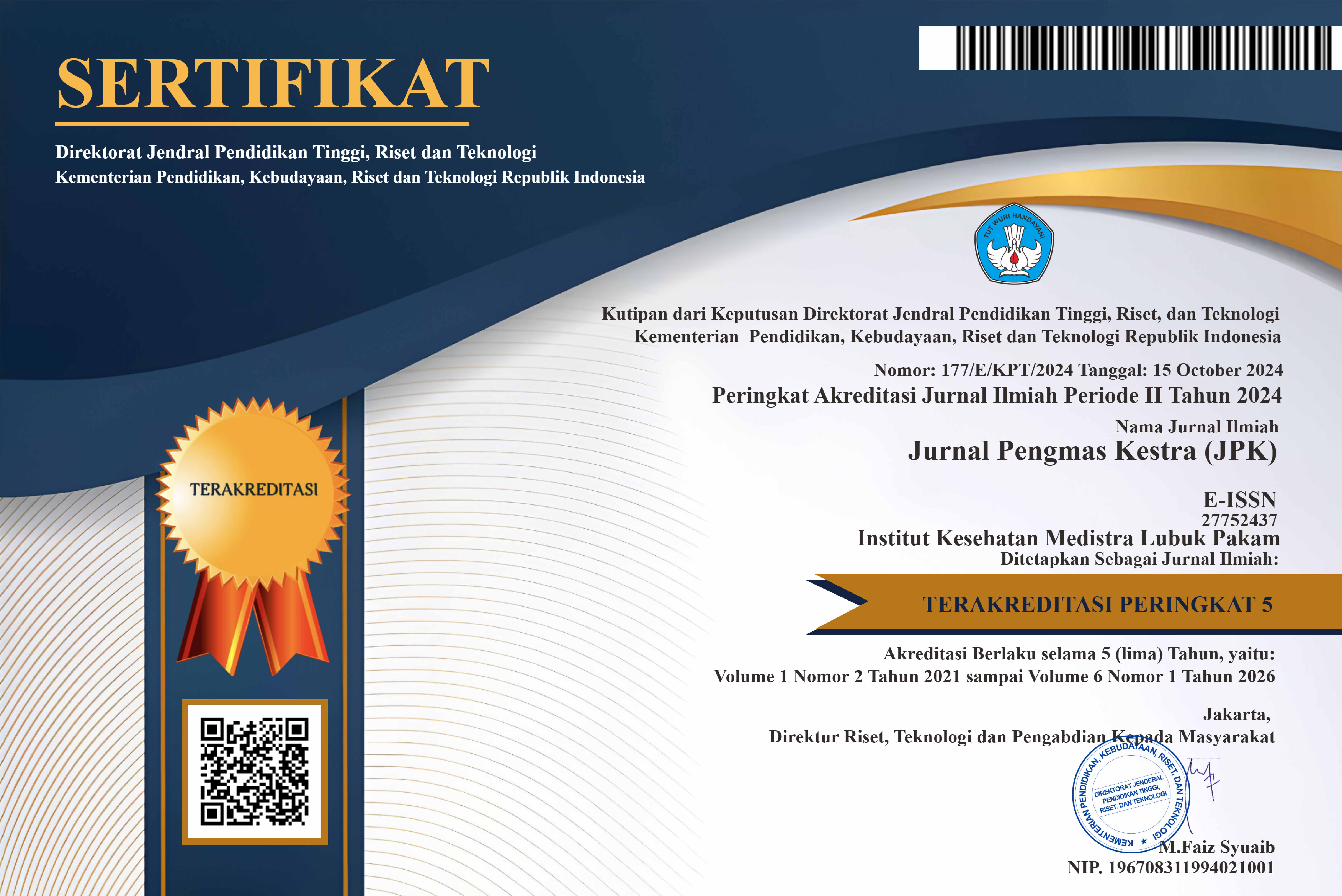Socialization of The Use of Sisik Naga Leaves (Drymoglossum Piloselloides) Medicinal Plant as An Antibacterial for The Lubuk Pakam Pekan
DOI:
https://doi.org/10.35451/jpk.v4i1.2171Keywords:
Kulit Naga Leaves, Antibacterial Activity, Staphylococcus epidermidisAbstract
In Indonesia, one type of plant that is often found is Drymogglossum Piloselloides, or better known as dragon scale leaves. These leaves are included in the category of herbal plants or traditional medicines which are rich in anti-inflammatory, anti-oxidant and anti-cancer compounds. Not only this, secondary metabolite compounds contain various other forms, namely flavonoids, tannins and saponins, which are believed to be antibacterial, to inhibit the growth of bacteria that cause acne, including Staphylococcus epidermidis, which is a member of the genus Gram-positive staphylococcus. In this community service activity, the aim is to provide information about the role and benefits of dragon scale leaves which can be an antibacterial agent for the wider community. In the service program carried out through socialization media using lecture, question and answer and implantation methods with the participation of 15 people in Lubuk Pakam. In accordance with the PkM program that has been produced, a conclusion was obtained regarding wider community insight and knowledge about dragon scale leaves which can be used for antibacterial purposes, in this case proven by the increase in the posttest score which was compared with the pretest score. The average increase in knowledge of PkM participants was obtained with a value of 28.4. Not only that, the maximum posttest score was obtained with a score of 85, in contrast to the lowest posttest score, namely 55 if a comparison was made with the pretest that had been carried out previously.
References
Andalia, R. (2021). Formulasi Sediaan Sabun Padat Transparan Dari Ekstrak Etanol Daun Sisik Naga (Pyrrosia piloselloides L). Jurnal Sains dan Kesehatan Darussalam. 1(2), pp. 51–57.
André, C., Van Camp, A. G., Ung, L., Gilmore, M. S., & Bispo, P. J. M. (2024). Characterization of the resistome and predominant genetic lineages of Gram-positive bacteria causing keratitis. Antimicrobial agents and chemotherapy, 68(3), e0124723.
Brown, M. M., & Horswill, A. R. (2020). Staphylococcus epidermidis-Skin friend or foe?. PLoS pathogens, Vol. 16(11), e1009026.
Carolia N, Noventi W. (2016). Potensi Ekstrak Daun Sirih Hijau ( Piper betle L .) sebagai Alternatif Terapi Acne vulgaris. Studi Pendidikan Dokter, Fak Kedokteran; Univ Lampung. Vol5(1):140.
Dessinioti, C., & Katsambas, A. (2022). Antibiotics and Antimicrobial Resistance in Acne: Epidemiological Trends and Clinical Practice Considerations. The Yale journal of biology and medicine, 95(4), 429–443.
Rena, H. (2019). Perbandingan Rendemen Daun Sisik Naga (Drymoglossum piloselloides L) Dengan Metode Maserasi dan Refluks. Karya Tulis Ilmiah: samarinda.
Sibero, H. T., Sirajudin, A. & Anggraini, D. I. (2019). Prevalensi dan Gambaran Epidemiologi Akne Vulgaris di Provinsi Lampung. juke.kedokteran.unila.ac.id, 2(3).
Downloads
Published
Issue
Section
License
Copyright (c) 2024 Chandra Pranata, Dicky Yuswardi Wiratma, Rimma Santika

This work is licensed under a Creative Commons Attribution 4.0 International License.
Copyright in each article is the property of the Author.




















